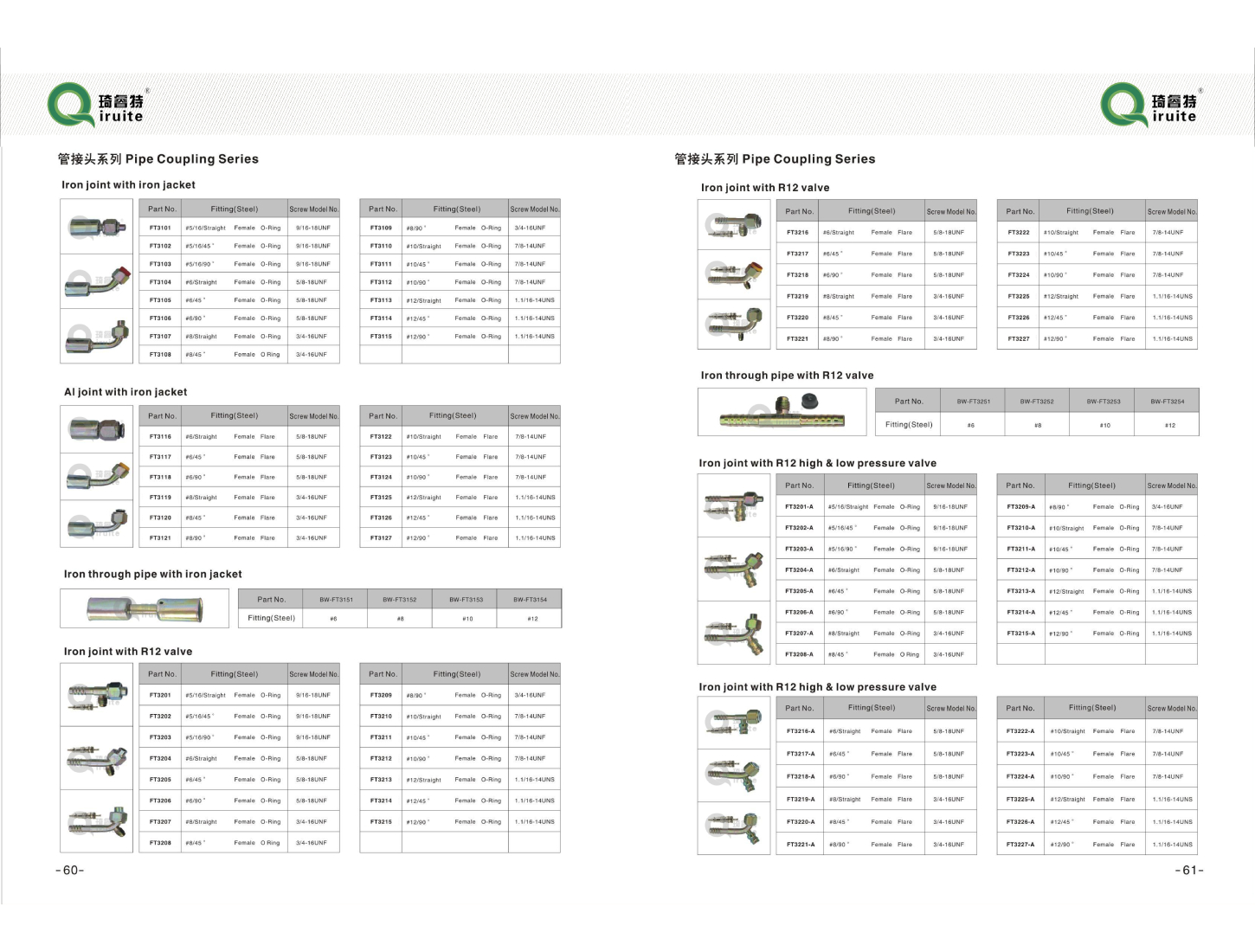Overview of SAE J2064 Standards for Automotive Air Conditioning Hoses
Understanding SAE J2064 Air Conditioning Hose Standards
The proper functioning of an automobile's air conditioning (A/C) system is paramount for comfort and safety, especially in regions with extreme temperatures. One crucial component of this system is the air conditioning hose, which must efficiently transport refrigerant, oil, and other fluids under varying pressures. The SAE J2064 standard provides manufacturers, engineers, and consumers with a comprehensive framework for the design and performance of A/C hoses used in automotive applications.
Overview of SAE J2064 Standard
SAE J2064 is a standard established by the Society of Automotive Engineers (SAE) that outlines the specifications for the construction, performance, and testing of air conditioning refrigerant hoses used in vehicles. The primary objective of this standard is to ensure the hoses can withstand the demanding conditions within an A/C system, including exposure to refrigerants, elevated temperatures, and pressures.
The standard offers different classifications based on the type of refrigerants being used (for example, R134a or R1234yf) and sets forth specific requirements for the materials used in manufacturing the hoses. These materials must not only be resilient and flexible but also resistant to chemical degradation from the refrigerants and engine oils.
Key Features of SAE J2064 Hoses
1. Material Composition Hoses compliant with SAE J2064 are typically made from high-quality materials like rubber compounds reinforced with high-strength textile or metal fibers. This ensures that they are both flexible and strong enough to handle the pressures involved in the A/C system.
2. Pressure Ratings The hoses must be capable of withstanding both high and low pressure, as the A/C system operates under a wide range of conditions. SAE J2064 specifies the minimum burst pressure and proof pressure that hoses need to achieve to ensure safety and reliability.
sae j2064 air conditioning hose

3. Temperature Resistance Given the varying temperatures that A/C hoses experience — from the cold refrigerant to hot engine components — the materials must have excellent temperature resistance. The hoses are tested against extreme temperature fluctuations to ensure their structural integrity over time.
4. Chemical Resistance Hoses under this standard must also exhibit resistance to chemical attacks from refrigerants and oil additives. This is critical because chemical degradation can lead to leaks and system failure.
5. Durability The hoses must pass several endurance and fatigue tests to ensure long-term reliability. They should have a service life that can match or exceed that of the vehicle itself, minimizing the need for replacements and reducing maintenance costs.
Importance of Compliance
Using hoses that meet the SAE J2064 standard is essential for several reasons. First, it ensures that the hoses function correctly within the A/C system, leading to optimized performance and efficiency. Second, compliance with these standards is often a requirement for warranty considerations and regulations imposed by regulatory authorities.
Consumers and technicians should be aware of the importance of using quality parts that meet or exceed SAE standards. Subpar hoses that do not adhere to this standard can lead to refrigerant leaks, inadequate cooling performance, and potential damage to the A/C system.
Conclusion
In conclusion, the SAE J2064 air conditioning hose standard is a vital component in the automotive industry, providing a uniform guideline for the manufacture and testing of A/C hoses. By ensuring quality and performance, this standard enhances the reliability of automotive air conditioning systems, contributing to driver comfort and vehicle longevity. Understanding and adhering to these standards not only benefits manufacturers and consumers but also promotes safety on the road.
-
Ultimate Spiral Protection for Hoses & CablesNewsJun.26,2025
-
The Ultimate Quick-Connect Solutions for Every NeedNewsJun.26,2025
-
SAE J1401 Brake Hose: Reliable Choice for Safe BrakingNewsJun.26,2025
-
Reliable J2064 A/C Hoses for Real-World Cooling NeedsNewsJun.26,2025
-
Heavy-Duty Sewer Jetting Hoses Built to LastNewsJun.26,2025
-
Fix Power Steering Tube Leaks Fast – Durable & Affordable SolutionNewsJun.26,2025

